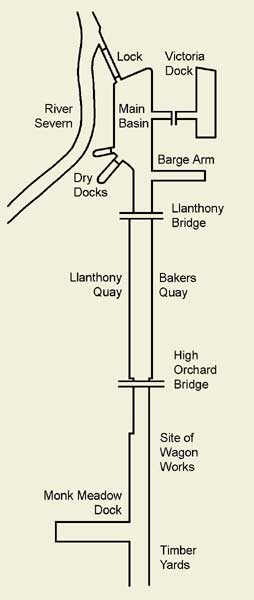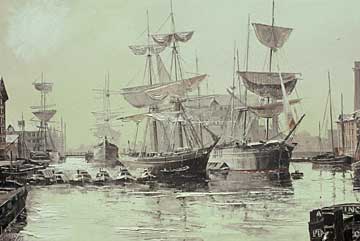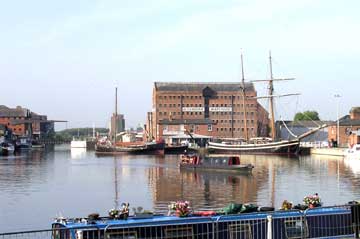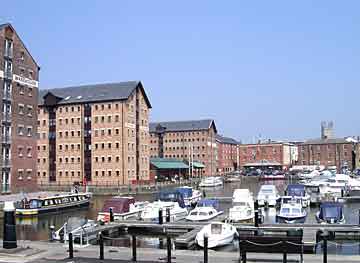Main
Basin, Lock and Barge Arm
The Main Basin was
the original terminus of the ship canal from Sharpness, opened in
1827. Here cargoes were transferred to smaller craft which passed
through the lock and continued up the River Severn to the Midlands.
The Barge Arm was also an early feature to accommodate small vessels
bringing goods for local distribution.
Dry Docks
The small dry dock was suitable for repairing
most of the vessels in the early days, but as larger ships came
into service, a second dock was built in 1853 to cater for the largest
ships that could pass up the canal fully loaded.
Baker's Quay
Baker's
Quay was constructed in the late 1830s by a group of local businessmen
led by Samuel Baker at a time when the Canal Co. was heavily in
debt and could not finance the much needed additional quay-space.
Victoria Dock
The Main Basin and Baker's Quay became so busy during the 1840s
that ships had to queue in the canal waiting for a place to discharge.
To provide more quay-space, the Victoria Dock was opened in 1849.
Llanthony Quay
Llanthony Quay was built in the early
1850s by the Gloucester & Dean Forest Railway Co., soon taken
over by the GWR, to provide a means of supplying coal from the Forest
of Dean as an export cargo. Behind the quay are some ruins of Llanthony
Priory that are now looked after by a buildings preservation
trust.
Timber Yards
and Wagon Works
During the second half of the 19th century,
much of the east bank of the canal for 3/4 mile south of Bakers
Quay was developed as timber yards, with several having their own
saw mills and one becoming a wagon works.
Monk Meadow Dock
and Quay
Monk Meadow Dock was opened in 1892 to provide
additional quay-space for the timber trade, and it was later used
for receiving petroleum products. To the south of the dock, Monk
Meadow Quay was built beside the canal in 1965 for the discharge
of timber from motor coasters. |




